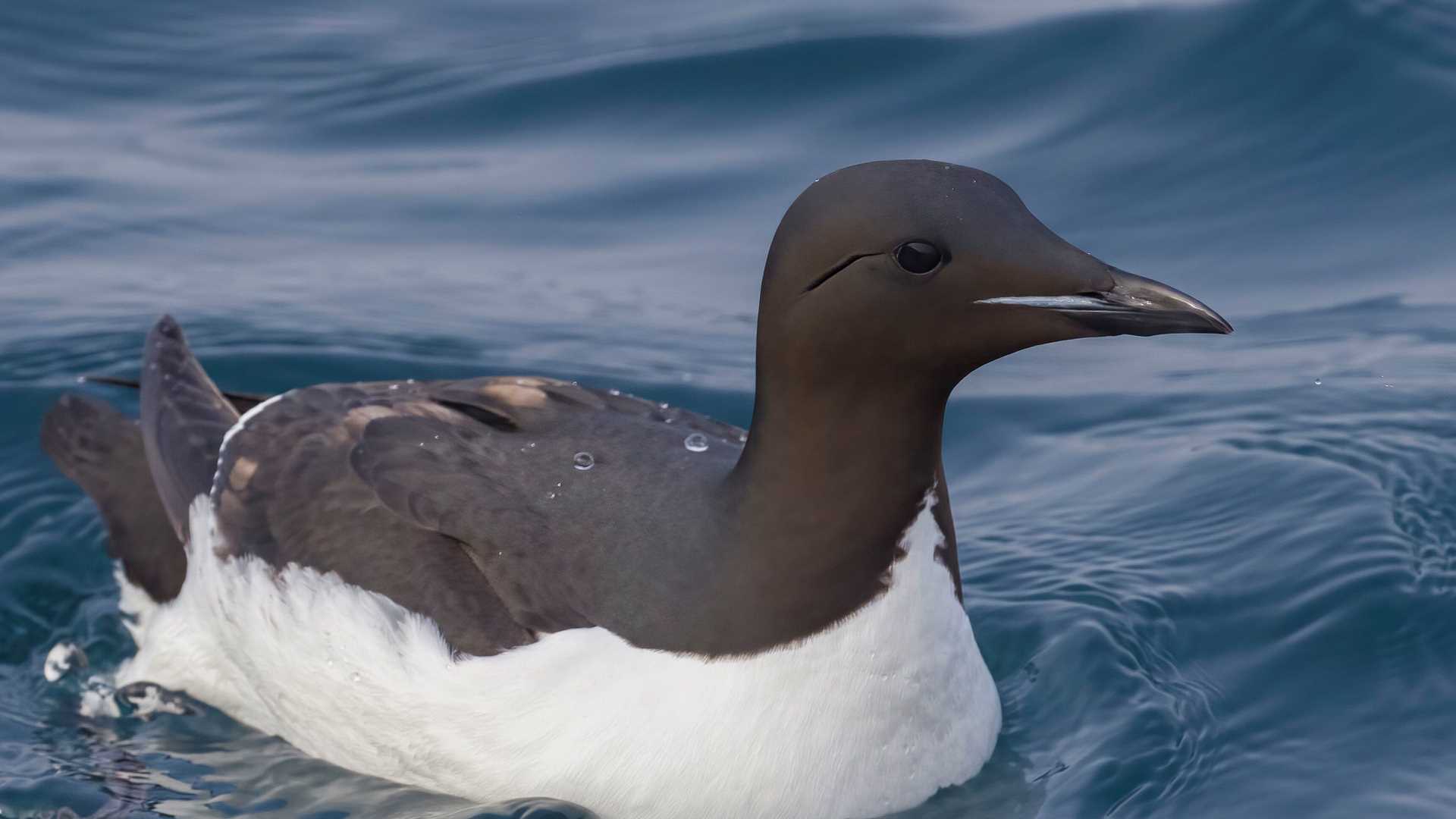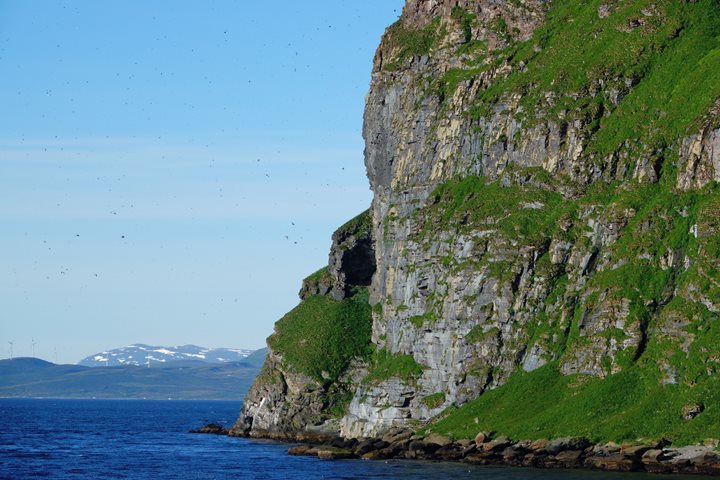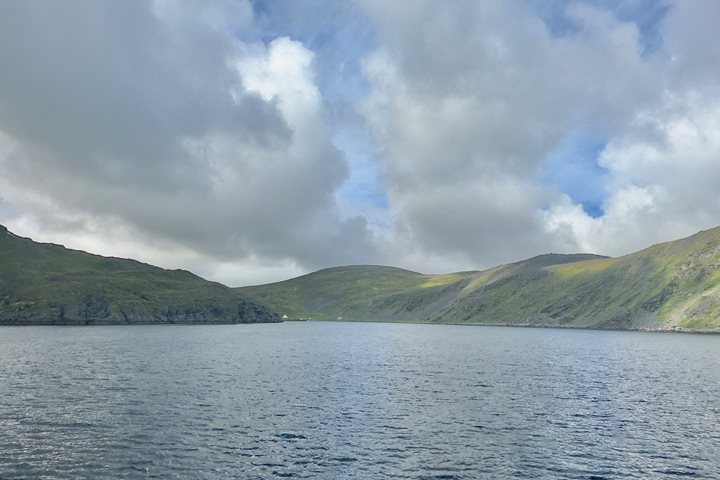The second full day of our expedition exploring the marvelous archipelago of Svalbard started very early; we boarded our Zodiacs at 6:30 am and headed into a dense cover of fog. Almost right away, we started seeing huge numbers of birds floating on the calm surface and bobbing up and down slightly with the gentle waves. It is easy to mistake thick-billed murres for penguins from a distance and momentarily forget which hemisphere you are visiting. But all doubts disappear when the murres open and flap their wings before taking off and flying away with fast and strong wingbeats. Thick-billed murres are related to everyone’s favorite bird, the puffin. They are powerful divers and have been recorded diving up to six hundred feet in pursuit of the small pelagic crustaceans and fish they eat. Unlike other diving birds, including the loons and grebes that use their feet to propel themselves in the water, all members of the puffin family, known as alcids, swim using their wings. It’s quite a remarkable feat, being able to dive so deep and fly into the sky!
Thick-billed murres nest by the thousands on the very impressive cliffs at Alkefjellet, and this morning’s foggy conditions made for a very dramatic and picturesque scenario. The tall, vertical cliffs towered in the fog like the setting of a Hollywood movie. Birds literally covered not only the water and the cliffs but also the skies. Up to hundreds of black-and-white bodies were seen in the air at any given time. What a magnificent display of life! All that life attracts predators, of course, and Arctic foxes are never far away from large nesting bird colonies; we had the chance to watch one of them for a long time as it patrolled the base of the cliffs looking for a fallen egg or an injured bird.
Eventually, we returned to beautiful National Geographic Endurance and sailed across the Hinlopen Strait, the channel that separates Spitsbergen Island from Nordaustlandet, and entered Wahlenbergfjorden. This is a large fjord that splits into two branches, Palanderbukta and Kobbungen. Both still retain a good amount of fast ice. The fog had disappeared, and the weather was completely spectacular: clear blue skies and absolutely no wind. Still, mirrorlike surfaces reflected the snowy mountains. Some walruses and seals rested on ice floes and seemed to enjoy the good weather themselves. Such perfect conditions lured some brave souls to jump into the frigid water for an authentic polar plunge above 70° N, and we all enjoyed their exclamations and funny jumps, making for a great closure of an amazing day exploring the High Arctic.
Photo caption and photographer: Thick-billed murre swimming placidly at Alkefjellet, Spitsbergen Island. Photo by Carlos Navarro







